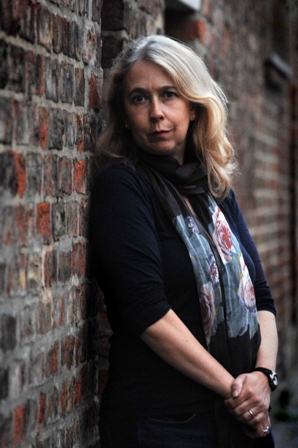Helen Cadbury on The Writing Process: Pantsing v. Plotting
Over the next couple of months I’m involved in a project called Read Regional, where I’ll be visiting libraries (and one book shop) across the North, talking about my latest book, Bones in the Nest. My favourite part of every event is the Q and A. It’s always interesting to get a question nobody has asked before, but some questions come up regularly and those are the ones I can be ready for. There is often a question about writing routine, and one about planning. Before I was published, I was always fascinated by the writing process of the authors I enjoyed reading. I still am. We all want to know if we’re ‘doing it right’. There’s a well-thumbed copy of Stephen King’s On Writing on my bookshelf that can attest to this. So when I’m asked about my process, I try to give a helpful and succinct answer. The trouble is, I’m not sure if I’m really being truthful. Do I really get up every day and write between 8.30 and 12.30, because that’s when my brain is working best? Or do I just wish I did? And on the question of planning or flying by the seat of my pants, I’m never sure what the right answer should be and in fact, I think I do both.
‘Pantsing,’ the flying by the seat of your pants approach, has a lot to recommend it. I can immerse myself in the story and tell it in the order it comes to me, knowing that in the editing process I will be able to shape it. It works for me until about half way through the first draft: then I need to stop and take stock. It’s like climbing a hill and taking in the view to work out the best path back down the hill (or onwards to another summit). My sense is that pantsing works best if the writer has an uninterrupted period of time to work. If I really was writing every morning for four hours, I could pants my way to a first draft in forty days flat. Unfortunately, life has a habit of interrupting that flow in a very unpredictable way and it can be hard pick up the momentum after a break of only a few days, especially if there is no plan to follow.
Planning, or plotting, is something all writers do, to a greater or lesser extent. Some create detailed outlines of scenes and chapters and they don’t start the book until they are absolutely sure about what’s going to happen next. I like to start with a synopsis, which is much shorter, but is a framework within which it’s possible to embrace the unexpected. I’m currently working on the third book in the Sean Denton series. At around the half-way point, I was diagnosed with breast cancer and my writing came to a stop. When I did begin to write again, I couldn’t remember where I’d got up to. My treatment cycles had unpredictable effects and the work grew in fits and starts, and went down several cul-de-sacs in the process. I began to feel very frustrated.
A ‘get well’ message got me thinking. ‘Just keep buggering on,’ said my friend David Berger, a British GP who gave up his practice in rural Devon to start a new life as a doctor in the Australian outback. I picked up my laptop when I had the energy, read books about plotting, stopped giving myself a hard time and decided to ‘Just Keep Buggering On.’
I had a chat online with David about his job, and it occurred to me that writers’ lives are no difference from any other work. David says:
“in a very remote outback emergency department anything, absolutely anything can happen at any time, and does all the time. You have a routine, but beyond that what you have is years of training, and indoctrination in a way of problem-solving, and deep experience of possible permutations and outcomes. The medical work I do is totally seat of the pants, and when you look at my other hobbies, it is all about immediate reactions to difficult situations.”
One of David’s hobbies is flying small aircraft. Flying, quite literally by the seat of his pants. You can watch him here landing in a field (trigger warning for the vertiginous.)
Every time I watch that, I see the writing process. There’s the landing strip; it is the basic plot, who did what to whom, and then we lurch away, there are trees, oh my God, watch out for the trees! And water, and a shed, and then, it’s okay, he’s found the landing strip again, but the route was unexpected and twisty, just like a good crime novel.
So I think I’ll keep buggering on, with my mix of plotting and pantsing, working on my writing routine, creating outlines so I don’t forget what I’m doing when the unexpected strikes. Then I want to fly a bit, take off and see what happens, before I bring the story back to land. Now that I’m feeling much, much better, and my energy is coming back, that 8.30 to 12.30 routine is very nearly within my grasp. Nearly. Although 9.30 is maybe more realistic, when my bed is so warm and comfortable and the spring is proving to be so cold and wet.
Helen Cadbury is a York based writer whose debut novel, To Catch a Rabbit, was joint winner of the Northern Crime Award. The follow-up, Bones in the Nest, is out now. To view Helen’s upcoming events, visit our events page.
Helen on Twitter: @helencadbury



